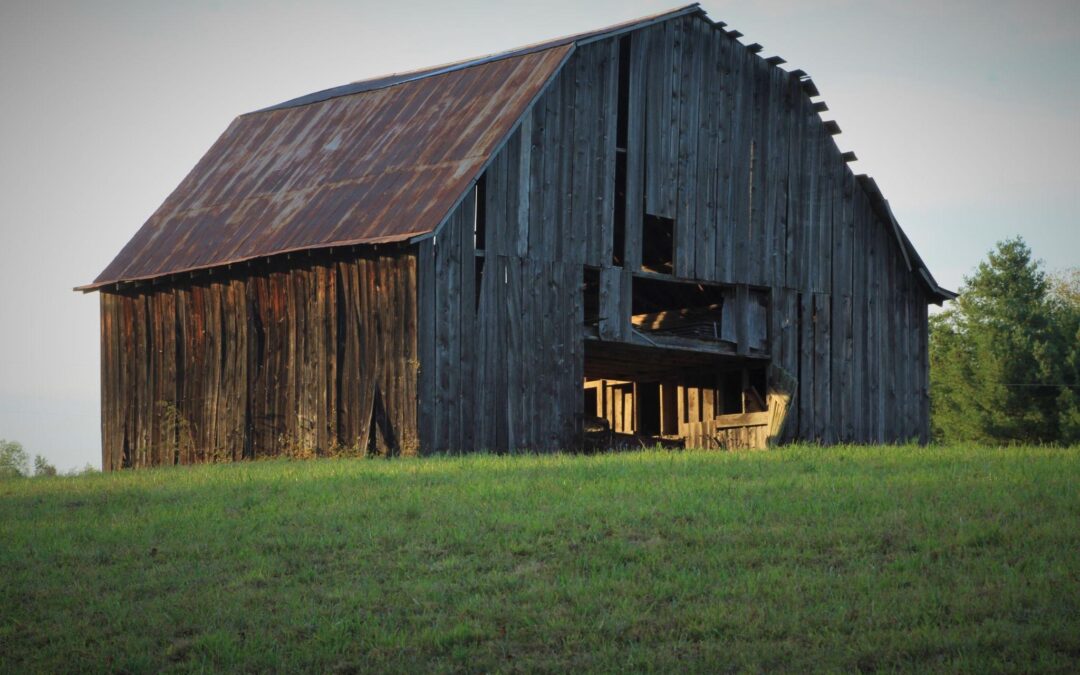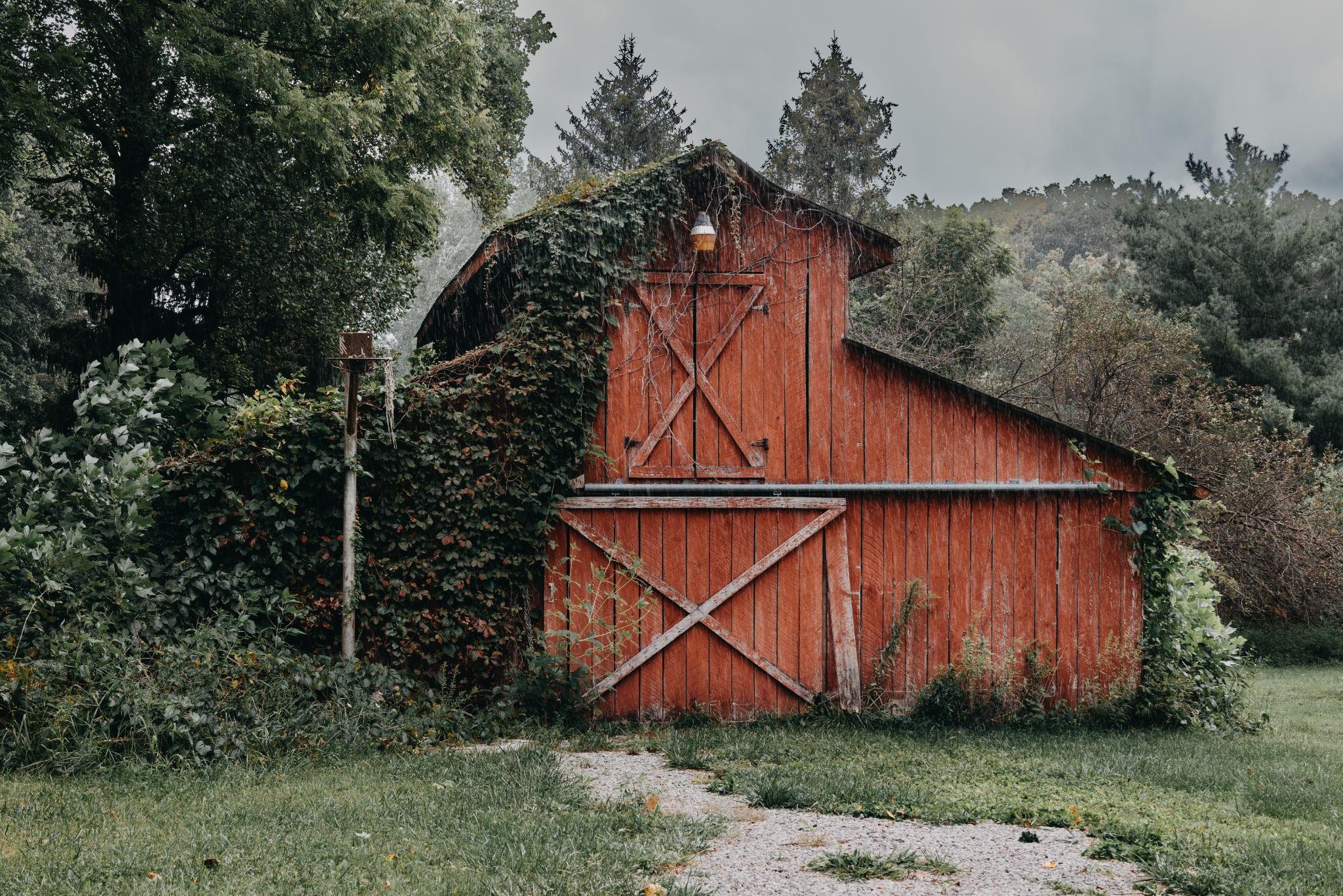Barns are the backbone of New York farms. They store feed and tools, shelter animals, and protect years of hard work. But age and weather wear them down.
When upkeep slips, small issues turn into big risks: water gets in, walls shift, and roofs fail under snow. Rules and safety standards can also be at risk. You already know repairs are needed. You’re just looking for how to make your barn strong again.
Continue reading to discover old barn restoration ideas for farms in New York. Discover why protecting barn structures matters to farmers with this guide.
Understanding the Unique Challenges of Old Farm Barns in New York
New York brings tough weather. Heavy snow, strong wind, and freeze‑thaw cycles put stress on every board and beam. Over time, weak spots show up.
Common problems include:
- posts that rot where wood meets damp soil
- walls that lean as foundations move
- and roofs that sag after years of storms
Many older barns also sit on stone foundations that can crack or crumble. If these issues are ignored, they hurt productivity, create safety hazards, and can cause trouble with codes and insurance. Fixing the root cause early protects your operation and your time.
Proven Restoration Ideas That Strengthen Farm Barns
The good news: proven methods can bring an old barn back to safe, daily use. These ideas protect the structure, cut future repair costs, and keep heritage in place.
Foundation Reinforcement & Realignment
A barn can’t be strong if its base is weak. Soil movement and water can push walls out of line and make the frame sag.
- Wall‑pushing systems gently move leaning walls back into position.
- Shotcrete (sprayed concrete) adds strength and seals weak stone or block foundations.
- Raise‑and‑lift techniques correct low spots and help the frame sit true again.
These steps stop movement and restore balance. They also buy you decades of safe use and simpler upkeep.
Structural Bracing & Frame Stabilization
Frames carry the load. After years of work, some members lose strength and need help.
- Cabling and engineered bracing hold walls steady and prevent further lean.
- Replacing tired beams, joists, and posts brings back full load‑bearing strength.
- Angle/knee braces and mid‑roof supports help the roof stand up to snow and wind.
With the frame stabilized, people, animals, and equipment stay safer. The building works the way you need it to, day in, day out.
Roof Protection & Weatherproofing
Roofs take the worst of New York’s weather. When they leak, water damages rafters, hay, bedding, and gear.
- Durable metal roofing sheds snow and resists wind and rain.
- Tight flashings, fasteners, and underlayment stop leaks before they start.
- You can keep the historic look while upgrading to modern, longer‑lasting materials.
A sound roof protects everything below it. It also reduces emergency calls during storms and lowers long‑term costs.
Siding & Exterior Repairs
Siding keeps the weather out. Boards that are split, soft, or missing let water in and shorten a barn’s life.
- New or repaired siding improves weather resistance and slows decay.
- Trim, doors, and windows can match the original look, so character stays intact.
Fresh, tight exteriors keep the structure dry and stable. That means fewer surprises and better protection for what you store inside.
Balancing Heritage and Practical Needs
You should not have to choose between history and utility. A smart plan does both.
Woodford Barn Repair keeps original timbers and details when they can be saved. At the same time, we add the structure and protection today’s farms need.
This balance respects your family’s story and supports daily farm work. Over time, preserved character adds value to the property while strong upgrades reduce downtime.
Results from New York Farm Restorations
Across New York, we have straightened 100‑plus‑year‑old barns, reinforced frames, and replaced failing roofs. Farmers tell us their buildings feel solid again and easier to maintain. Leaning walls stand plumb, doors swing right, and feed stays dry.
We have also helped dairy barns stay in service with safer aisles, stronger posts, and dry storage. These results show what’s possible when you pair heritage care with modern methods. For owners at the consideration stage, real‑world fixes build trust and make next steps clear.
What Farmers Should Consider Before Starting Restoration
A clear plan saves time and money. Before work begins, set the basics.
- Get a full inspection and a written plan. Know what must be fixed now and what can wait.
- Check codes and safety rules. Make sure upgrades meet today’s standards and insurance needs.
- Compare costs. Proactive work usually beats the price of emergency rebuilds.
Farm repair and maintenance costs have risen in recent years, which makes early action even more important. When you plan ahead, you control scope and schedule, and avoid weather‑driven surprises.
Why Choose Woodford Barn Repair for Pole Barn Restoration in New York
The right partner makes the work smoother and the results stronger. Woodford Barn Repair has served New York farms for over 50 years.
- We explain wall‑pushing, shotcrete, and bracing in clear, farmer‑friendly terms.
- Our process is collaborative: free estimate → on‑site review → written plan → updates → completion.
- A long regional track record and real testimonials show consistent results.
If you’ve searched for “barn restoration near me” or considered pole barn restoration in New York, you want a team that respects history and delivers dependable structure. That’s the balance we bring to every job.
Strong Barns, Strong Seasons Ahead
Every barn carries the story of a farm. Restoring yours protects that story and keeps your operation safe, compliant, and efficient.
Barn restoration is more than a repair. It is a long‑term investment in your fields, livestock, and time. When you’re ready to plan the next steps, Woodford Barn Repair is here to help you build strength for the seasons ahead.
Get an estimate today. Tomorrow, we can make sure your barn stays strong for the seasons ahead.
Frequently Asked Questions
Are old barns worth restoring?
Yes. A well‑planned restoration extends the life of a barn, keeps its heritage, and often costs less than a full rebuild. For farms, this means safety and savings.
Can you restore an old barn?
Absolutely. With methods like wall‑pushing, bracing, and roof upgrades, barns of 100+ years can be made strong and safe again while keeping their character.
What do people do with old barns?
Farmers often keep barns for storage, equipment, or livestock. Others adapt barns for new uses, like workshops or event spaces, while keeping the structure sound.
How much to restore an old barn?
Costs vary by size and condition. Factors include foundation, roof, and siding needs. A full inspection and written plan help set clear expectations and budgets.
How long does barn restoration take?
Timelines depend on the scope. Small repairs may take weeks, while full restorations can take months. Clear planning keeps the process on schedule and predictable.
What is the lifespan of a restored barn?
With proper care, a restored barn can serve for decades. Reinforced frames, durable roofs, and protected foundations extend its life well beyond the next generation.
Does barn restoration improve farm value?
Yes. Strong barns protect equipment and animals, reduce repair costs, and add long‑term value to the farm, making restoration a smart investment.


